
| Version | Summary | Created by | Modification | Content Size | Created at | Operation |
|---|---|---|---|---|---|---|
| 1 | Victoria Samanidou | + 1799 word(s) | 1799 | 2020-02-16 16:25:02 | | | |
| 2 | Victoria Samanidou | + 2 word(s) | 1801 | 2020-02-16 18:33:14 | | | | |
| 3 | Victoria Samanidou | + 3 word(s) | 1804 | 2020-03-05 12:33:17 | | | | |
| 4 | Victoria Samanidou | + 3 word(s) | 1804 | 2020-03-05 12:40:42 | | | | |
| 5 | Dean Liu | -60 word(s) | 1744 | 2020-10-29 09:23:39 | | |
Video Upload Options
The Laboratory of Analytical Chemistry was established in 1963 and is part of the Department of Physical, Analytical and Environmental Chemistry of the School of Chemistry in the Faculty of Sciences of Aristotle University of Thessaloniki (AUTh). Today the Laboratory has seven Faculty members: Six Professors (Aristidis Anthemidis, Stella Girousi, Victoria Samanidou, George Theodoridis, George Zachariadis, Anastasia-Stella Zotou), and two Assistant Professors (Paraskevas Tzanavaras and George Tsogkas). Its function is also supported by 1 member of the Technical Staff (Foteini Zougrou, MSc Chemist). The main subject of the Laboratory's teaching and research is analytical chemistry, namely the development, validation and application of new analytical methods, as well as the exploration of new instrumental techniques and innovative materials used in chemical analysis. Within the framework of the educational services provided by the Laboratory, a number of courses are offered in the undergraduate and postgraduate curricula. Besides the students of the Department of Chemistry, students of other departments of AUTh are also trained. The main research fields served by the faculty members of the Laboratory of Analytical Chemistry, include:
- SEPARATION AND HYPHENATED ANALYTICAL TECHNIQUES
- SPECTROSCOPIC, AUTOMATED AND MULTIELEMENTAL TECHNIQUES
- ELECTROANALYTICAL TECHNIQUES, SENSORS AND BIOSENSORS
- MODERN SAMPLE PREPARATION TECHNIQUES AND INNOVATIVE MATERIALS
1.Analytical Chemistry Laboratory - Chemistry School – Aristotle University of Thessaloniki- GREECE
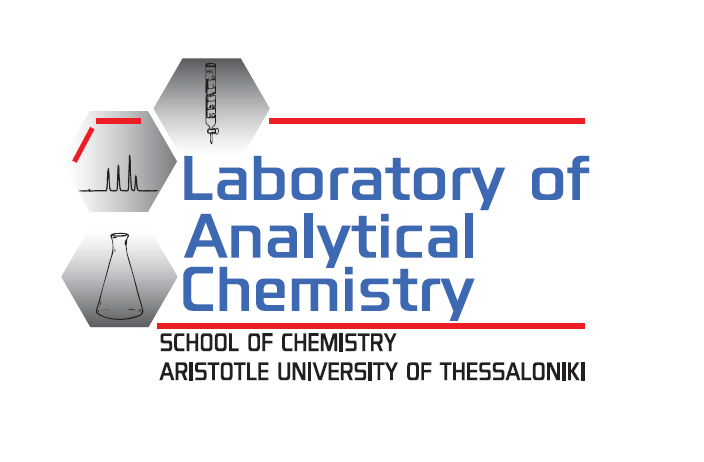
The Laboratory of Analytical Chemistry was established in 1963 and is part of the Department of Physical, Analytical and Environmental Chemistry of the School of Chemistry in the Faculty of Sciences of Aristotle University of Thessaloniki (AUTh). Today the Laboratory has seven Faculty members: Six Professors (Aristidis Anthemidis, Stella Girousi, Victoria Samanidou, George Theodoridis, George Zachariadis, Anastasia-Stella Zotou), and two Assistant Professors (Paraskevas Tzanavaras and George Tsogkas). Its function is also supported by 1 member of the Technical Staff (Foteini Zougrou, MSc Chemist). The main subject of the Laboratory's teaching and research is analytical chemistry, namely the development, validation and application of new analytical methods, as well as the exploration of new instrumental techniques and innovative materials used in chemical analysis. Within the framework of the educational services provided by the Laboratory, a number of courses are offered in the undergraduate and postgraduate curricula. Besides the students of the Department of Chemistry, students of other departments of AUTh are also trained.
The main research fields served by the faculty members of the Laboratory of Analytical Chemistry, include:
2. Separation and Hyphenated Analytical Techniques
Various separation techniques: High Pressure Liquid Chromatography (HPLC), Gas Chromatography (GC). Ion Chromatography (HPΙC), Capillary electrophoresis (CE) as well as hyphenated ones using sequential injection (SI), Flow injection (FI), mass spectroscopy (MS) such as SI/FI-HPLC, SI/FI-CE, LC-MS, GC-MS, etc are used for method development to solve any analytical problem. The methods are subsequently validated and applied in bioanalysis, metabolomic analysis, pharmaceutical analysis, environmental and food analysis, forensics, dentistry, etc.
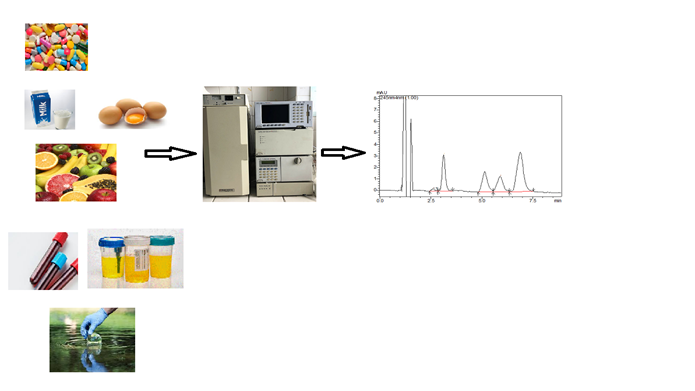
3. Spectroscopic, Automated and Multielemental Techniques
New sensitive and reliable analytical techniques with improved performance characteristics are developed and applied to the Archaeometric Analysis, Environmental Analysis, Bioanalysis, Food Analysis, etc. These techniques include Atomic Spectroscopy (FAAS, ETAAS, ICP-AES, AES) Techniques, Hyphenated techniques combining a separation technique with powerful and atom-selective detectors such as Mass Spectrometers, Inductively Coupled Plasma atomizers etx (SI/FI-HPLC, SI / FI-CE, LC-MS, GC-MS, LC-ICP etc), flow injection and other automated techniques (FIA, SIA, etc), Automated sample processing, plasma-based multi-element analytical techniques etc.
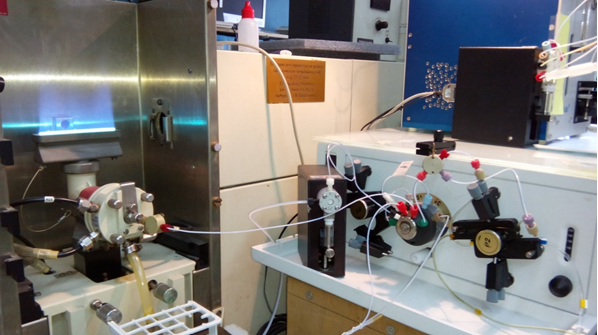
4. Electroanalytical Techniques, Sensors and Biosensors
New sensitive analytical techniques with improved performance characteristics are developed and applied to Bioanalysis and Food Analysis. These techniques include Voltammetry, Ion Selective Electrodes, Potentiometry, Sensors and Biosensors.
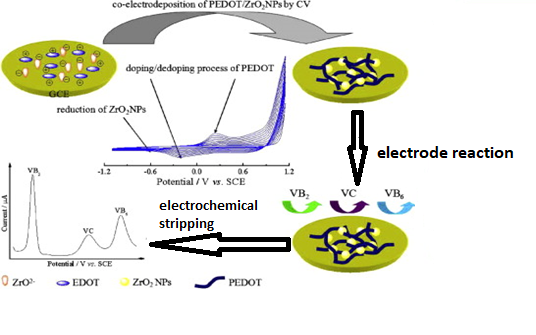
5. Modern Sample Preparation Techniques and Innovative Materials
New sample preparation protocols are developed based on the use of innovative materials (nanomaterials, polymers, graphite, sol-gel fabric phase media, magnetic sorbents etc.). These protocols are focused in specific analytical issues dealing with various matrices, target analytes and application fields. Prior to their use , they are validated and further applied to the analysis of biological samples, food samples, environmental samples etc.
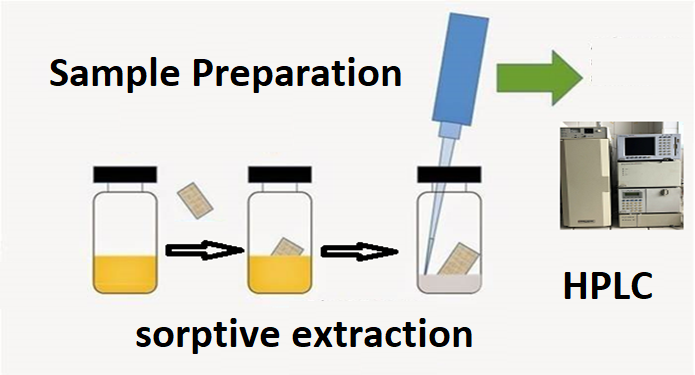
6. Selected Publications
1. Pressure-driven mesofluidic platform integrating automated on-chip renewable micro-solid-phase extraction for ultrasensitive determination of waterborne inorganic mercury.
L.A. Portugal, L.M. Laglera, A.N. Anthemidis, S.L.C. Ferreira, M. Miró, Talanta 110 (2013) 58-65. DOI: http://10.1016/j.talanta.2013.02.013
2. Integrated lab-in-syringe platform incorporating a membraneless gas-liquid separator for automatic cold vapor atomic absorption spectrometry.
Giakisikli, M. Miró, A. Anthemidis, Analytical Chemistry 85 (2013) 8968-8972. DOI: http://10.1021/ac402013j
3. Automated headspace single-drop microextraction via a lab-in-syringe platform for mercury electrothermal atomic absorption spectrometric determination after in situ vapor generation.
Mitani, A. Kotzamanidou, A.N. Anthemidis, Journal of Analytical Atomic Spectrometry 29 (2014) 1491-1498. DOI: http://10.1039/c4ja00062e
4. An automated flow injection system for metal determination by flame atomic absorption spectrometry involving on-line fabric disk sportive extraction technique.
Α. Anthemidis, V. Kazantzi, V. Samanidou, A. Kabir, K. G. Furton, Talanta 156-157 (2016) 64–70. DOI: http://dx.doi.org/10.1016/j.talanta.2016.05.012
5. Automatic pressure-assisted dual-headspace gas-liquid microextraction. Lab-in-syringe platform for membraneless gas separation of ammonia coupled with fluorimetric sequential injection analysis.
Georgia Giakisikli, Aristidis N. Anthemidis, Analytica Chimica Acta 1033 (2018) 73-80. DOI: http://doi.org/10.1016/j.aca.2018.06.034
6. Evaluation of polypropylene and polyethylene as sorbent packing materials in on-line preconcentration columns for trace Pb(II) and Cd(II) determination by FAAS.
Viktoria Kazantzi, Eleni Drosaki, Arina Skok, Andriy B. Vishnikin, Aristidis Anthemidis
Microchemical Journal 148 (2019) 514–520
DOI: https://doi.org/10.1016/j.microc.2019.05.033
7. pH: Principles and measurements,
S. Karastogianni, S. Girousi, S. Sotiropoulos,
Encyclopedia of food and Health 4 (2016) 333.
8.Electroanalytical quantification of total dsDNA extracted from human sample using, an ionic liquid modified, carbon nanotubes paste electrode,
C. Serpi, L. Kovatsi, S. Girousi.
Analytica Chimica Acta (2014), pp. 26-32
9. Detection of short oligonucleotide sequences of hepatitis B virus using electrochemical DNA hybridisation biosensor.
S. Karastogianni, S. Girousi.
Chemical papers 69 (2015) 202.
10. Electrochemical behavior and voltammetric determination of a manganese(II) complex at a carbon paste electrode
S.Karastogianni, S. Girousi, Analytical chemistry insights 11 (2016) 1
11. A novel electrochemical bioimprinted sensor of butyl paraben on a modified carbon paste electrode with safranine-o capped to silver nanoparticles
S.Karastogianni, S. Girousi
Int.J Curr Res. Vol 9,iss 11, pp. 61118-61124, Nov 2017
12. Extraction of metal ions with metal–organic frameworks
Manousi, N., Giannakoudakis, D.A., Rosenberg, E., Zachariadis, G.A.
Molecules, 2019, 24, art. no. 4605. DOI: 10.3390/molecules24244605
Katsifas, C.S., Touloumzidou, A., Zachariadis, G.A.
Archaeometry, 2019, 61, 1313-1332. DOI: 10.1111/arcm.12486
14. Investigating the performance characteristics of the barrier discharge ionization detector and comparison to the flame ionization detector for the gas chromatographic analysis of volatile and semivolatile organic compounds
Antoniadou, M., Zachariadis, G.A., Rosenberg, E.
Analytical Letters, 2019, 52, 2822-2839. DOI: 10.1080/00032719.2019.1628247
15. Determination of Cisplatin and Carboplatin Anticancer Drugs by Non-suppressed Ion Chromatography with an Inductively Coupled Plasma Atomic Emission Detector
Zachariadis, G.A., Misopoulou, O.E.Analytical Letters, 2018,51, 1060-1070.
DOI: 10.1080/00032719.2017.1366498
16. An integrated sequential injection analysis system for ammonium determination in recycled hygiene and potable water samples for future use in manned space missions
Giakisikli, G., Trikas, E., Petala, M., Karapantsios, T., Zachariadis, G., Anthemidis, A.
Microchemical Journal, 2017,133, 490-495. DOI: 10.1016/j.microc.2017.04.008
17. Determination of Tyrian purple by High Performance Liquid Chromatography with diode array detection
Athina Vasileiadou, Ioannis Karapanagiotis, Anastasia Zotou
J. Chromatogr. A, 1448, 67-72 (2016).
18. Targeted profiling of hydrophilic constituents of royal jelly by hydrophilic interaction liquid chromatography–tandem mass spectrometry
Athanasia Pina, Olga Begou, Dimitris Kanelis, Helen Gika, Stavros Kalogiannis, Chrysoula Tananaki, Georgios Theodoridis, Anastasia Zotou
J. Chromatogr. A, 1531, 53–63 (2018).
19. Wine and grape marc spirits metabolomics. A review
Dimitra Diamantidou, Anastasia Zotou, Georgios Theodoridis
Metabolomics: Official journal of the Metabolomic Society 14(12), pp. 159 (2018).
20. UV-induced degradation of wool and silk dyed with shellfish purple
Ioannis Karapanagiotis, Anastasia Zotou, Athina Vasileiadou
Dyes and Pigments, 168, 317–326 (2019).
21. Development and validation of an ultra- high performance liquid chromatography-tandem mass spectrometry method for the determination of phthalate esters in Greek grape marc spirits
Dimitra Diamantidou, Olga Begou, Georgios Theodoridis, Helen Gika, Emmanouil Tsochatzis,
Stavros Kalogiannis, Natalia Kataiftsi, Evangelos Soufleros, Anastasia Zotou
J. Chromatogr. A, 1603 165–178 (2019).
22. Within-day reproducibility of an HPLC− MS-based method for metabonomic analysis: application to human urine
HG Gika, GA Theodoridis, JE Wingate, ID Wilson
Journal of proteome research 6 (8), 3291-3303, 2007
23. Liquid chromatography–mass spectrometry based global metabolite profiling: a review
GA Theodoridis, HG Gika, EJ Want, ID Wilson
Analytica chimica acta 711, 7-16, 2012.
24. LC-MS-based methodology for global metabolite profiling in metabonomics/metabolomics
G Theodoridis, HG Gika, ID Wilson
TrAC Trends in Analytical Chemistry 27 (3), 251-260, 2008.
25. Evaluation of the repeatability of ultra-performance liquid chromatography–TOF-MS for global metabolic profiling of human urine samples
HG Gika, E Macpherson, GA Theodoridis, ID Wilson
Journal of Chromatography B 871 (2), 299-305, 2008.
26. UPLC-MS-based analysis of human plasma for metabonomics using solvent precipitation or solid phase extraction
F Michopoulos, L Lai, H Gika, G Theodoridis, I Wilson
Journal of proteome research 8 (4), 2114-2121, 2009.
27. Rapid monitoring of organochlorine pesticides residues in various fruit juices and water samples using fabric phase sorptive extraction and gas chromatography-mass spectrometry
Ramandeep Kaur, Ripneel Kaur, Susheela Rani, Ashok Kumar Malik,
Abuzar Kabir, Kenneth G. Furton, Victoria Samanidou
Molecules 2019, 24, 1013; doi:10.3390/molecules24061013
28. Fabric phase sorptive extraction for the isolation of five common antidepressants from human urine prior to HPLC-DAD analysis
Artemis Lioupi, Abuzar Kabir, Kenneth Furton, Victoria Samanidou
Journal of Chromatography B 1118–1119 (2019) 171–179. https://doi.org/10.1016/j.jchromb.2019.04.045
29. Fabric phase sorptive extraction for simultaneous observation of four penicillin antibiotics residues from human blood serum prior to high performance liquid chromatography and photo-diode array detection
Vasileios Alampanos,Abuzar Kabir, Kenneth G. Furton, Victoria Samanidou, Ioannis Papadoyannis
Microchemical Journal 2019.
https://doi.org/10.1016/j.microc.2019.103964
30. Synthesis of Graphene Oxide Based Sponges and Their Study as Sorbents for Sample Preparation of Cow Milk Prior to HPLC Determination of Sulfonamides
Martha Maggira, Eleni Deliyanni, Victoria Samanidou
Molecules 2019, 24, 2086; doi:10.3390/molecules24112086
31. Graphene Oxide Based Magnetic Nanocomposites with Polymers as Effective Bisphenol–A Nanoadsorbents
Kyriazis Rekos, Zoi-Christina Kampouraki, Charalampos Sarafidis, Victoria Samanidou, Eleni Deliyanni
Materials 2019, 12(12), 1987; https://doi.org/10.3390/ma12121987
32. Micelles mediated zone fluidics sensor for hydrazine determination in environmental samples
T.D. Karakosta, C. Christophoridis, K. Fytianos and P.D. Tzanavaras
Molecules, 25 (2020) 174 (doi:10.3390/molecules25010174)
33. Automated fluorimetric determination of the genotoxic impurity hydrazine in allopurinol pharmaceuticals using zone fluidics and on-line solid phase extraction
P.D. Tzanavaras, S Themistokleous and C.K. Zacharis
J. Pharm. Biomed. Anal., 177 (2020) article 112887
34. Automated Stopped-Flow Fluorimetric Sensor for Biologically Active Adamantane Derivatives Based on Zone Fluidics
P.D. Tzanavaras, S. Papadimitriou and C.K. Zacharis
Molecules, 24 (2019) 3975
35. Zwitterionic hydrophilic interaction chromatography coupled with post-column derivatization for the analysis of glutathione in wine samples
C.K. Zacharis, P.D. Tzanavaras, T. Karakosta and D.G. Themelis
Anal. Chim. Acta, 795 (2013) 75
36. Selective fluorimetric method for the determination of histamine in seafood samples based on the concept of zone fluidics
P.D. Tzanavaras, O. Deda, T. Karakosta, D.G. Themelis
Anal. Chim. Acta, 778 (2013) 48




